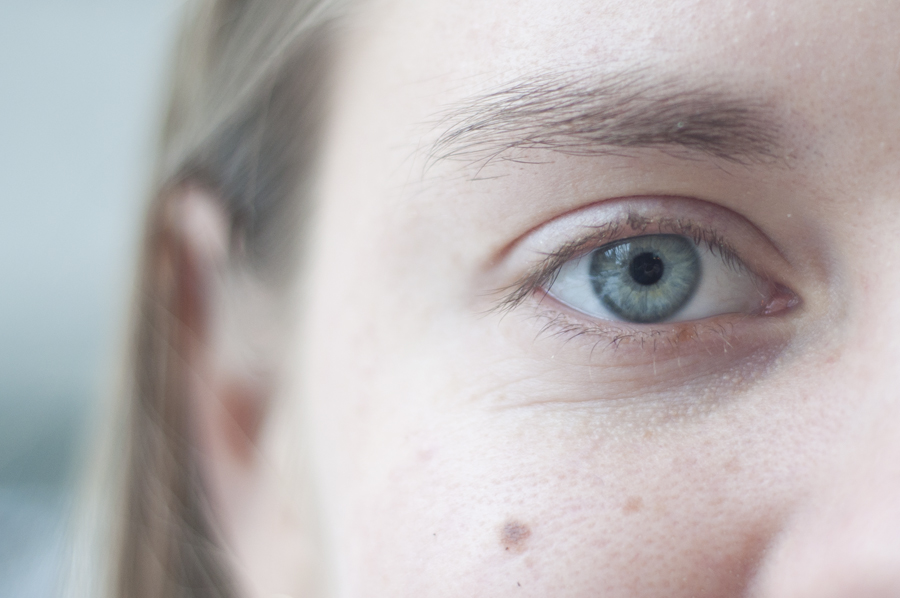The Tyndall effect is the principle responsible for blue eyes, and also happens to account for the blue colour of the sky. It’s a phenomenon that occurs when light is scattered by “colloid” particles—solid particles of 40-900 nanometers in diameter that float in suspension in a liquid medium.
When white light passes through a medium, it ‘divides’ into different colours. The various colours into which white light splits depend on the frequency of the light. The colour blue results from white light at a much higher frequency and shorter wavelength than the colour red.
Due to the size and nature of colloids, shorter wavelengths of light, such as blue, fail to pass through the dense particles, and are reflected back to the observer. Conversely, light of longer wavelengths, such as red, orange, and yellow, can pass through the object.
The reflection of blue light operates under a similar principle that allows very long wavelengths like radio waves to pass through solid objects, while short wavelengths are stopped and reflected; the size of the particles that make up the wall are so miniscule that metre-long radio waves are unaffected passing through. By the same principle, flour suspended in water will actually appear light blue rather than white.
The human iris consists of three layers. One is made up of microscopic solid particles suspended in a fluid-like layer, with a light-absorbing layer beneath, and a spongy stroma layer between.
Contrary to the popular notion that we have blue pigments in our eyes, we are only able to produce brown and yellow pigments in the iris—the combination of the two manage to make every eye colour we observe through tricks of light.
For instance, more melanin–a light-absorbing pigment–in the iris will cause a greater proportion of light to be absorbed, rather than reflected as ‘backscatter,’ creating the effect of brown or black eyes. This backscattering phenomenon redirects waves of light back out of the eye, affecting shorter wavelengths like blue far more strongly.
For those with blue eyes, melanin is only present in the last of the three layers of the iris. The top two layers are translucent, meaning that little light is absorbed. More light is reflected as backscatter, making the eyes appear blue. In fact, babies often have blue eyes for a short period of time, because their irises have not yet been fully developed. As the particles produced in the stroma get larger as you age, blue eyes in children often turn grey.








